Acidic foods for babies
Baby Bottoms 101: Diet & Diaper Rash
Diaper rash is one of those pesky problems every mom wants to avoid, because angry red bumps or an ugly rash on your baby’s diaper area is not something mama wants to see. But despite your best efforts, diaper rash happens.
Now what? Well, you’re a mom, so you can definitely handle it. But what’s the best way?
How do you get rid of diaper rash quickly, so you can get back to funny faces, gummy grins, happy diaper changes and giggles?
Buh-bye with Boudreaux’s Butt Paste®When you spot diaper rash, your first line of defense is to use Boudreaux’s Butt Paste®. It eases symptoms and helps treat and protect baby’s sensitive skin. For fast results, try Maximum Strength Boudreaux’s Butt Paste®, because it’s clinically shown to provide immediate soothing relief from rash discomfort. Moms also say they noticed visible improvements of some of the worst symptoms of diaper rash in as little as three hours.
You can make changes to your baby’s diet that will help ease diaper rash. Certain types of food can aggravate her already sensitive skin and actually make diaper rash symptoms worse. Acidic foods are often to blame for making diaper rash worse. Foods high in fat and sugar can also be problematic. On the flip side, starchy foods can help ease diaper rash.
Acidic foods to avoidIf your baby had diaper rash, think about cutting these foods out of her diet until her symptoms improve:
- Citrus fruits and juices
- Tomatoes and tomato-based products (this includes foods like spaghetti sauce)
- Strawberries
- Pineapple
- Grapes
- Raisins
When your baby has diaper rash, the last thing you want to add to the equation is diarrhea or loose stools. Every baby is different, but the following foods tend to trigger diarrhea in babies, so it’s a good idea to avoid them:
- Milk-based formula (cow’s milk)
- Apple juice
- Pear juice
- Cherry juice
- Apricots
- Peaches
- Pears
- Apricots
- Prunes and prune juice
Starches are easy to digest and add bulk to the stool, so that’s why they are A-Okay for baby to eat if she’s struggling with diaper rash symptoms.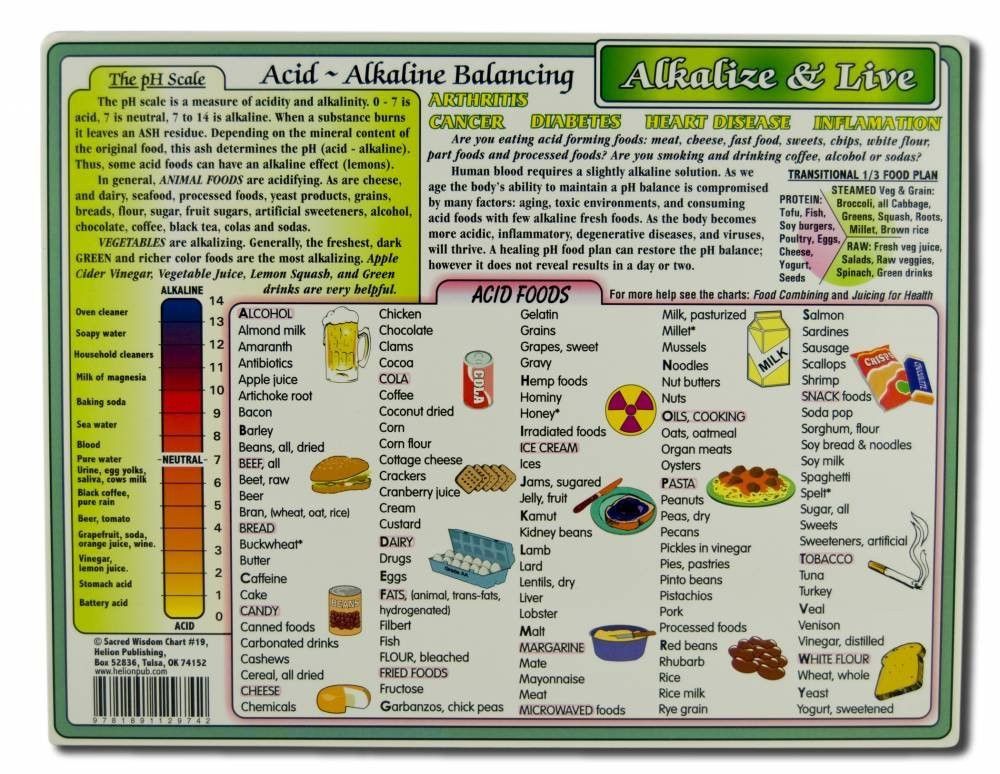 Babies who are eating solid foods can eat pasta and fermented whole grains. Other foods that are easy on diaper rash are chopped up soft-boiled eggs and plain yogurt with probiatics.
Babies who are eating solid foods can eat pasta and fermented whole grains. Other foods that are easy on diaper rash are chopped up soft-boiled eggs and plain yogurt with probiatics.
Remember, baby cereal doesn’t just have to be old-school rice cereal. She can try cereal made from oats, quinoa, brown rice or other whole grains. Other starchy options for baby include the following foods:
- Potatoes
- Rice
- Crackers
- Bread or toast
- Plantain
- Beans or lentils
If your baby has ever suffered from diarrhea, you’ve probably heard of the BRAT diet. This bland, easy-to-digest diet is used to bulk up baby’s stools. Since easing diaper rash symptoms is similar, the B.R.A.T. diet works too. Just remember to ease up on foods that bulk up her diet once her diaper rash symptoms improve, so she doesn’t get constipated.
B. = Banana
R. = Rice
A. = Applesauce
T. = Toast
Moms often refer to Boudreaux’s Butt Paste® as a “miracle ointment” that eases diaper rash within hours. If you’ve had a “Wow, this stuff is magic!” moment with Boudreaux’s Butt Paste®, share your story with us in the comments section on our Facebook page.
If you’ve had a “Wow, this stuff is magic!” moment with Boudreaux’s Butt Paste®, share your story with us in the comments section on our Facebook page.
Solid Foods and Diaper Rash
Your baby is bursting into tears, her bottom is pink and puffy, and you’re hurting at the thought of her being in any kind of pain. This heart-wrenching moment is probably brought to you by diaper rash, that evil condition that irritates your baby’s tushie, oftentimes accompanied by red spots or bumps. Diaper rash appears on your baby’s rump for many potential reasons, and if you recently started adding solid foods to your baby’s menu, there’s a possibility that you’ll be seeing more of it. Solid foods affect your little one’s digestion in many different ways, and while diaper rash is a fact of life, you should keep an eye out for repeat offender foods that seem to affect your baby more than others. Also keep in mind that certain kinds of foods are more likely to cause diaper rashes than others. Here are some examples:
Also keep in mind that certain kinds of foods are more likely to cause diaper rashes than others. Here are some examples:
-
Citruses
Acidic foods can be a major culprit if your baby is suffering from diaper rash. The acidity of these fruits can be a little hard for your baby’s delicate tummy to digest. Whether frequent diaper rashes are an issue or not, opt to wait about a year until you introduce citruses such as limes, grapefruits, and oranges to your baby’s diet.
-
Tomatoes
While they don’t have the same acidic taste of citruses, tomatoes are acidic as well—avoid these and tomato-based sauces.
-
Strawberries
Strawberries are also acidic. Like most berries, they’re sweet and babies usually enjoy them, but if diaper rash is an issue, they could also be to blame.
-
Prunes and plums
If a food causes diarrhea in adults, it could cause it for babies as well. When your little one’s poopsies are frequent and watery, diaper rash will probably be lurking around the corner! Avoid foods like prunes, plums, grapes and apricots if diarrhea becomes an issue.
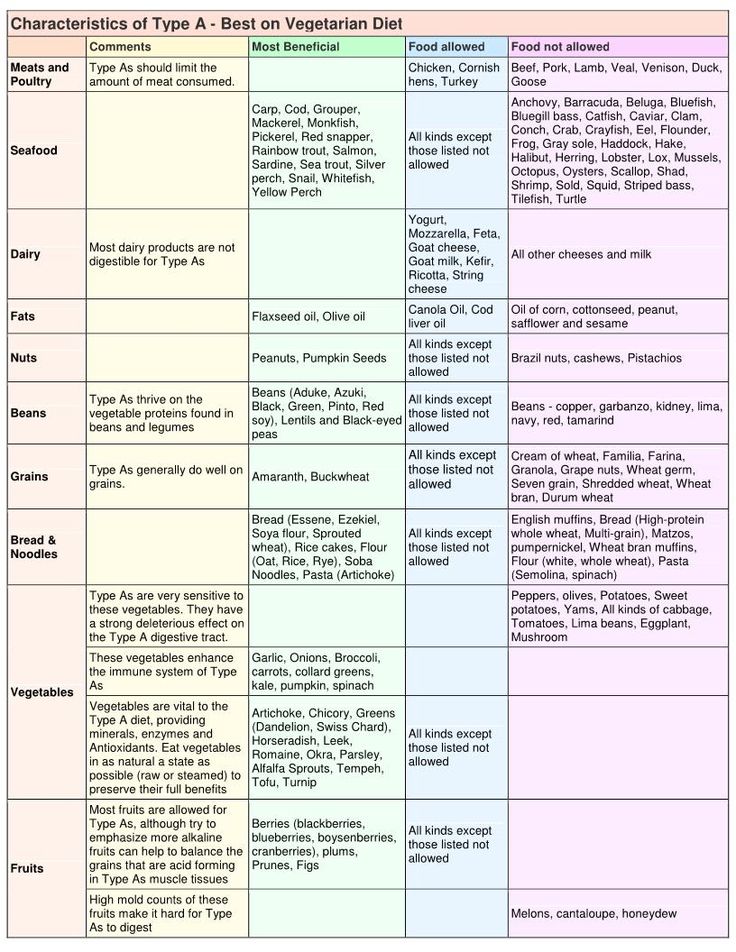
-
Dairy products
Yogurt is great, but try keeping other cow-based dairy products out of the mix if your little one is struggling.
-
Proteins
Some babies are sensitive to protein in foods like wheat (such as oatmeal) and beans.
There are a few other things you can do that can help you solve these mysterious cases of diaper rash. When you introduce solid foods, follow the three-day rule: Only feed your baby one kind of food for three days before switching to a new one. This will give their digestive system a chance to adapt. Be adamant about this if your little one is having frequent diaper rashes—it’ll also give you the chance to single out the foods and figure out which one is the issue. Also, try keeping a food journal. If diaper rashes become an issue, you’ll have an easier time singling out the potential culprits by going to the journal and looking for repeat offenders.
Remember that there’s no need to nix all of these foods from your grocery list just yet. They’re not all necessarily going to cause diaper rash! It’s when you begin to notice diaper rashes that it may be time to reconsider these foods and start playing detective. Being aware of what foods don’t sit well with your little one will help ensure her transition into solid foods is as smooth as a baby’s bottom.
They’re not all necessarily going to cause diaper rash! It’s when you begin to notice diaper rashes that it may be time to reconsider these foods and start playing detective. Being aware of what foods don’t sit well with your little one will help ensure her transition into solid foods is as smooth as a baby’s bottom.
Prohibited foods for children
List of prohibited foods for children.
Feeding a child with illness
What foods should not be eaten by children with various illnesses?
Anxious mood of parents is often associated with the problem of poor appetite of their own child. Moms and dads are worried about what to feed the child so that he eats with appetite and, God forbid, does not lose weight. But most of the problems arise with feeding the baby, when he has health problems and there are severe dietary restrictions. What kind of food should not be eaten by children with this or that disease?
Prohibited foods for children
The small organism grows rapidly and requires proper and balanced nutrition for its development. Carbohydrates, fats, proteins, vitamins, macro- and microelements are necessary substances for the normal physiological development of muscle and bone tissue, the brain, the proper formation of internal organs: the heart, kidneys, lungs, spleen, liver.
Carbohydrates, fats, proteins, vitamins, macro- and microelements are necessary substances for the normal physiological development of muscle and bone tissue, the brain, the proper formation of internal organs: the heart, kidneys, lungs, spleen, liver.
Proper nutrition of a child in the first years of life determines his subsequent health and the possibility of self-realization in adulthood. Therefore, it is important to lay the foundation for proper nutrition from an early age in order to avoid health problems in the future.
What should not be eaten by children under one year old?
Most pediatricians have come to the conclusion that breastfed babies should not receive whole cow's and goat's milk in any form. If a child is deprived of the opportunity to receive mother's milk, then such children are recommended adapted milk formulas for breast milk.
Cow's and goat's milk
Cow's milk is considered heavy food for the baby.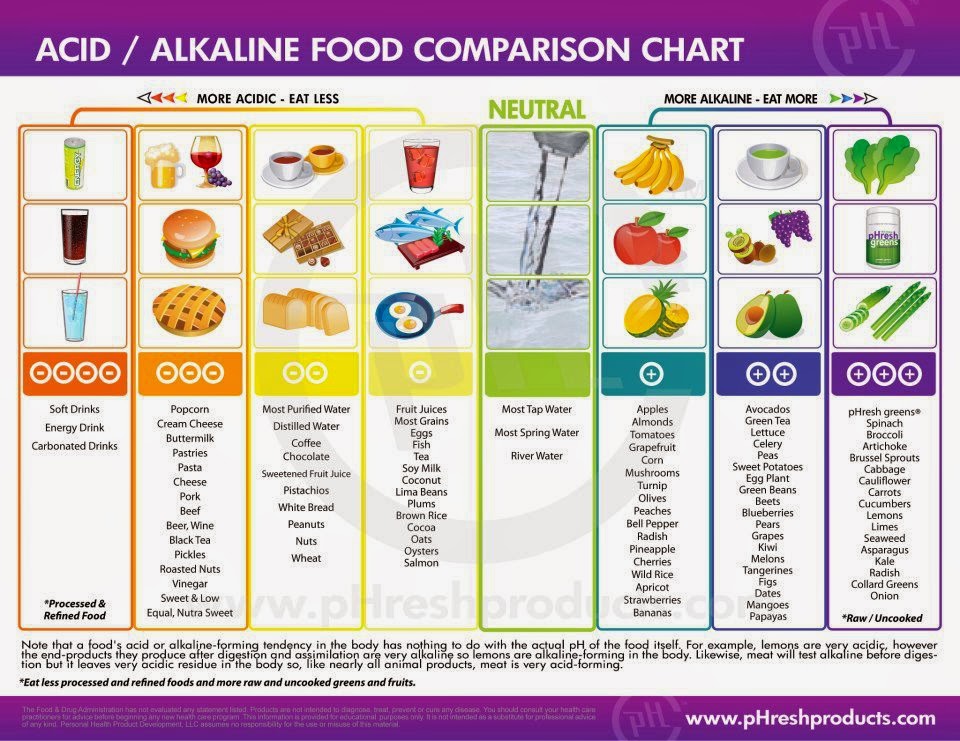 It contains a large amount of proteins, fats, mineral salts. The kidneys of the child begin to work with great effort, which leads to their overload. The liquid is excreted in a larger amount than necessary according to the physiological norm, which leads to the thirst of the baby. He receives a new portion of milk, so a "closed ring" is created.
It contains a large amount of proteins, fats, mineral salts. The kidneys of the child begin to work with great effort, which leads to their overload. The liquid is excreted in a larger amount than necessary according to the physiological norm, which leads to the thirst of the baby. He receives a new portion of milk, so a "closed ring" is created.
Cow's milk does not contain enough iron for a growing baby. Goat's milk contains less vitamin A than cow's milk, although in other respects it is closest to mother's milk.
The use of cow's milk in the early period of life can lead to the development of diabetes, iron deficiency anemia, and allergic diseases.
In addition, babies under two years of age have not yet formed enzymes that can break down the nutritional components of cow's milk. As a rule, cow's milk is not completely absorbed by the child's body.
IMPORTANT: It is not recommended to give yogurt to children under one year old, as it has a high acidity and contains alcohol.
What should children under 3 not eat?
Sugar and salt
Salt and sugar should not be given to children, at least as long as they can be dispensed with. And it is best not to give these products until the age of three. Since the addition of salt and sugar is considered traditional in cooking, the baby will sooner or later get acquainted with the taste of salted and sweet food in kindergarten or school.
IMPORTANT: As shown by Roskontrol: many children's fermented milk products contain a high percentage of sugar. Therefore, babies should be given unsweetened and not very acidic natural fermented milk products with a short shelf life.
Semolina
Gone are the days when semolina was considered an indispensable product for baby food. It turns out that semolina contains gliadin, one of the components of gluten that makes it difficult for children's intestines to work. Fitin - another ingredient in semolina, inhibits the absorption of vitamin D and calcium.
Semolina gluten can cause allergic manifestations in a child in the form of red itchy spots. Excessive feeding of semolina often leads to overweight children, which is difficult to get rid of later.
Juice or puree?
Many pediatricians differ in their opinion: is it possible to give children juices of industrial production and their own preparation? Some allow giving juice to babies, other doctors do not recommend drinking juice for babies up to a year and a half, but insist on the use of fruit and vegetable purees. Their motivation is based on the fact that such food is rich in plant fiber and has a beneficial effect on the baby's intestines.
What should children 4-5 years old not eat?
Babies at the age of 4-5 years old parents often transfer to adult food.
IMPORTANT: Dairy and sour-milk products made according to general production standards, and not according to special baby food technology, are of particular danger to children.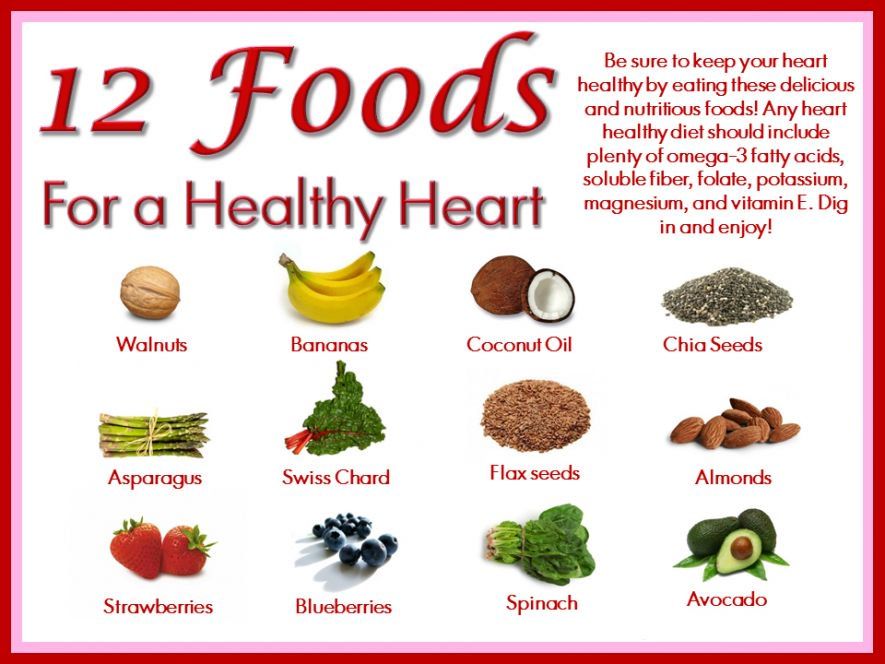
Honey
Honey is a useful natural product containing many biologically active components, macro- and microelements, and vitamins. But this bee product can cause allergic manifestations. In early childhood, it is better to give up honey and carefully introduce it into baby food later.
Sausages and frankfurters
Sausages and frankfurters are allowed to be given to children after the age of three, prepared according to a special technology for baby food. Labels on such products are usually provided with inscriptions from what age this product can be consumed. There will be no great harm to the health of the child if he eats baby sausages no more than once every two weeks.
IMPORTANT: Roskontrol does not recommend giving young children sausage products intended for adult nutrition. These products contain many ingredients that are harmful to the child's body: preservatives, flavor enhancers, phosphates, nitrites and other harmful substances.
Chocolate
Sweet treats should not be given to babies for a number of reasons:
chocolate contains sugar
cocoa powder can provoke allergies
cocoa butter is difficult to digest in the gastrointestinal tract9 of a child
2 seafood and caviar red caviar is a healthy food product containing a lot of complete protein and other useful components. But this is not food for younger children. Sea food ingredients are very allergenic, besides, seafood products and red caviar are processed with many preservatives and have a strong salty taste, which is unacceptable in baby food.
Strawberries, citrus fruits and other exotic fruits
Beautiful and tasty exotic fruits and fruits: kiwi, avocado, citrus fruits, pineapple, can cause severe allergic skin manifestations not only in babies, but also in older children. Strawberries, wild strawberries, raspberries also contain allergens, it is better not to give them to children, especially those who are prone to allergic reactions.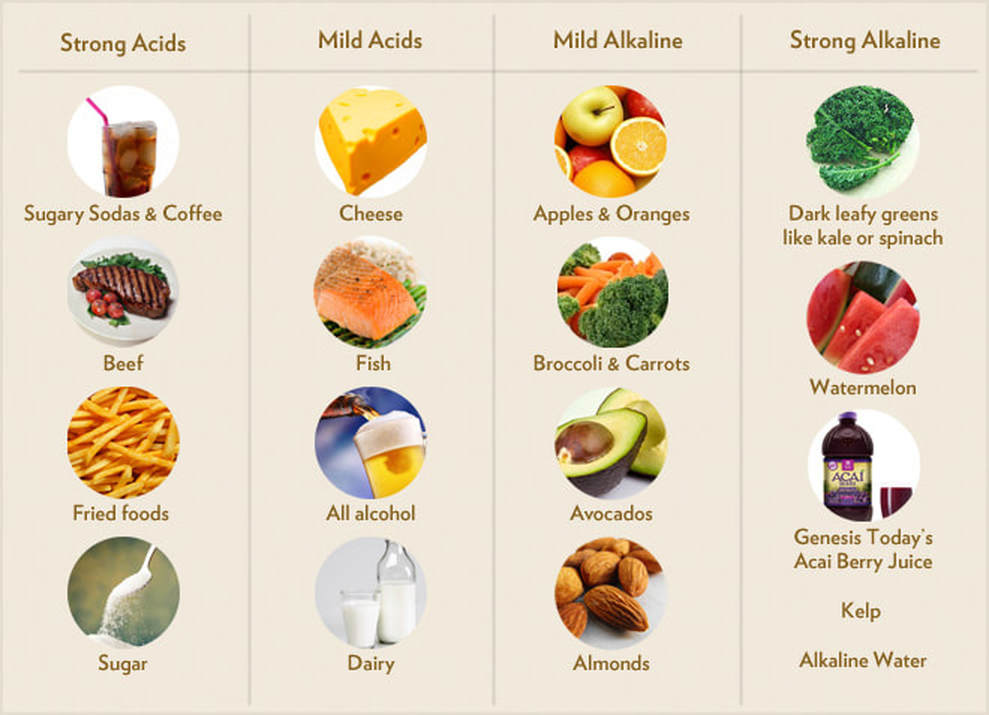
What is strictly prohibited for children to eat?
There are forbidden foods for babies in their first years of life:
whole milk
honey
mushrooms
Nuts
Black and green tea
Coffee
Chocolate
Fastfood
In industrial production of children's food, there is a list of products unacceptable for children:
Vinegar
Ethyl alcohol with a concentration of more than 0.2%
apricot kernels
sweeteners (except those special for dietary and baby food)
artificial flavors
benzoic and sorbic acids (they are used as preservatives)
hot and hot spices: pepper, mustard, horseradish
red meat, fish and poultry after refreezing
trans fats and hydrogenated oils
juice concentrates
food additives (various E additives not allowed in Russia for the production of baby food)
Prohibited products for children with various diseases
Childhood diseases are a test not only for the child's body, but also for parents.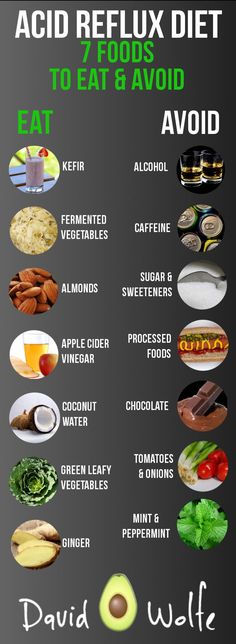 Only by the joint efforts of a doctor and loving moms and dads can the child’s recovery be accelerated, and these are: drug treatment, proper regimen and hygiene, good nutrition, excluding certain foods from the diet for various diseases.
Only by the joint efforts of a doctor and loving moms and dads can the child’s recovery be accelerated, and these are: drug treatment, proper regimen and hygiene, good nutrition, excluding certain foods from the diet for various diseases.
What should not be eaten in children with lactose?
Lactase deficiency is associated with the absence or insufficient amount of an enzyme that can break down milk sugar - lactose, which enters the body with dairy products.
In this disease, children experience disorders of the gastrointestinal tract: diarrhea or constipation, weight loss, fetid frothy stools, regurgitation, vomiting, colic, bloating.
If lactose intolerance is suspected, babies are placed on a lactose-free or low-lactose diet. After the diagnosis and treatment of the disease that caused lactase deficiency, the child undergoes control tests. With positive dynamics, the doctor may give permission for the gradual introduction of fermented milk products into the diet.
IMPORTANT: Lactose is not only found in milk and dairy products, it is used in the production of medicines, margarine, candy, bread, ham and sausages. Before buying certain products, you should carefully read their composition on the label.
What should not be eaten by children with angina?
Angina is a disease caused by viruses and bacteria. It is characterized by severe sore throat and high fever. During illness, the child's appetite is usually absent and this worries parents very much.
During an acute illness, do not force-feed your baby. Lack of appetite is a protective reaction of the body to the disease. After a few days, the child will begin to recover and the desire to eat will appear again.
Children with angina should not be given solid food. Food should be well ground, preferably to a puree state. Sour drinks, hot and cold dishes are contraindicated for an inflamed throat. Food should be warm and good tasting.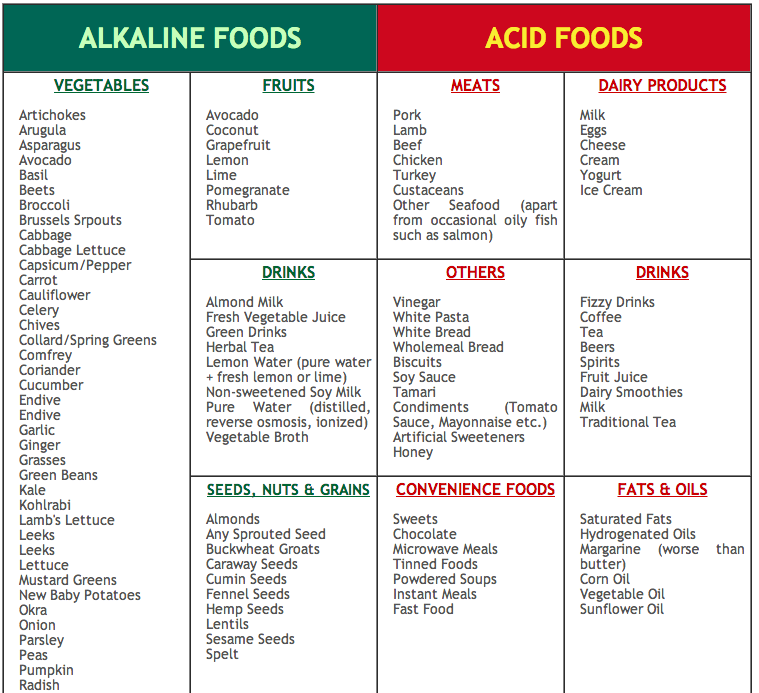
What should children not eat if they have allergies?
Allergic manifestations in children are caused by many reasons: food intolerance, drug intolerance, allergy to dust, animal dander, plant pollen, etc. During allergic manifestations, it is very important to adhere to the right diet and completely eliminate the products that provoke the appearance of allergies.
Allergic products
cow's milk
chicken eggs
bakery and pasta products containing gluten
honey
chocolate
citrus fruits
red berries: strawberries, wild strawberries, raspberries
chicken meat
seafood and some types of fish
Chickenpox is an infectious viral disease that affects almost all children attending preschool or school institutions. The acute period of the disease is associated with a rise in temperature, headache, itchy skin rashes in the form of fluid-filled vesicles.
To help your child cope with the disease and move to the recovery stage faster, you need to follow the right diet, consisting of healthy and complete foods.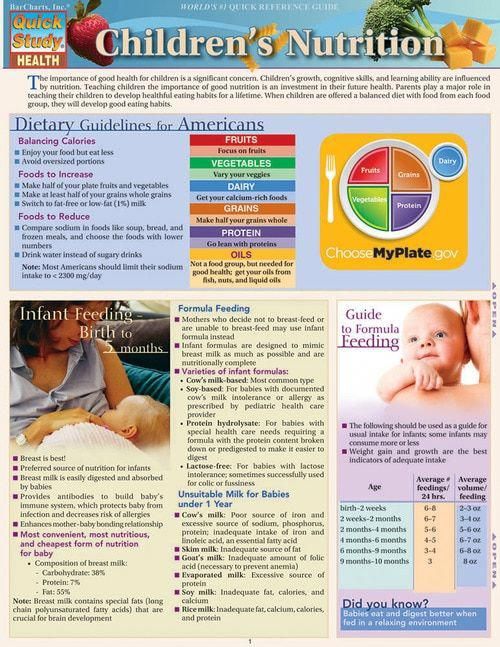 During illness, food should be excluded, which is difficult for the child's body to digest and can cause a number of complications from the gastrointestinal tract.
During illness, food should be excluded, which is difficult for the child's body to digest and can cause a number of complications from the gastrointestinal tract.
It is not recommended to feed a sick child with fatty, spicy, salty, sour and fried foods. Food should be balanced, light, soft, warm. Too hot and cold food is contraindicated for the child.
Foods to avoid during chicken pox:
milk
garlic
ginger
citrus fruits
red meat
Dysbacteriosis is a disease associated with disturbances in the normal intestinal microflora of the body. An imbalance between “beneficial bacteria” and pathogenic bacteria causes improper bowel function.
The child is concerned about:
intestinal motility disorder (constipation or diarrhea)
abdominal pain
vomiting
bloating
Apathy and lethargy
Lack of appetite
causes of dysbiosis in children are different:
consequences of antibiotic therapy
Militable power
Vitamin deficiency
000 with dysbacteriosis and the exclusion of unacceptable products contribute to the rapid recovery of the baby.
Foods to avoid in dysbacteriosis:
sour berries and fruits (cherries, sour apples, cranberries, pomegranates, tangerines)
raw vegetables and fruits
products that cause fermentation in the intestines (grapes, cabbage, legumes, carbonated drinks)
sweets
canned food
smoked meats
fast food dishes
What should not be eaten when a child has colic?
Colic often accompanies the little man in the first months of life. The baby is born with a sterile intestine and an immature gastrointestinal tract. In the body of a child, there are still not enough enzymes that can fully break down food. That is why a nursing mother should pay great attention to her nutrition.
Products that should not be included in the diet of a nursing mother
whole milk
cabbage
Gas water
store vegetable and fruit juices
Sweets
Chocolate
Bob
To prevent colic baby, the diet of a nursing mother should consist of steamed, boiled or baked foods. Preference should be given to vegetables and fruits with a green color. With further maturation of the child and the disappearance of colic, the choice of food products can be expanded, based on the recommendations of the doctor.
Preference should be given to vegetables and fruits with a green color. With further maturation of the child and the disappearance of colic, the choice of food products can be expanded, based on the recommendations of the doctor.
What should not be eaten if a child has diarrhea?
Diarrhea in a child can be caused by various reasons. These include poisoning, viral and infectious diseases, teething, gastrointestinal diseases, etc. But whatever the appearance of a digestive tract disorder is associated with, the key to a successful recovery of the body is properly prescribed nutrition for the disease
breastfeeding should not stop breastfeeding. Pediatricians recommend increasing the number of feedings, but reducing the dose of milk to avoid overfeeding and reduce the load on the baby's gastrointestinal tract
Formula-fed babies should be fed in the same way. That is, reduce the dose of formula for one feeding, but increase the frequency of feedings. In this case, it is recommended to use adapted fermented milk and low-lactate mixtures
In this case, it is recommended to use adapted fermented milk and low-lactate mixtures
For older children who have switched to "adult food", a special diet should also be developed by a doctor. At the same time, food must be prepared according to certain rules.
Food products that are difficult to digest and cause fermentation processes in the intestines should be discarded. Food is recommended to boil, bake, steam. Food products should be crushed with a blender or rubbed through a sieve. You can not eat fatty foods. Kashi (rice, oatmeal, buckwheat) should be boiled in water without adding milk.
Products prohibited by children
Fresh vegetables, fruits and berries
Fatty meat
Fresh bread
Acake products
Concentrated meat broth
What can not be eaten under the rotary unit for children?
Rotavirus infection is called "intestinal flu". The disease is transmitted by viruses through food, especially dairy products. Babies from 6 months to 2 years of age are most often infected with a viral infection.
Babies from 6 months to 2 years of age are most often infected with a viral infection.
Intoxication of the child's body leads to fever, intestinal colic, liquid diarrhea, dehydration.
IMPORTANT: Young children become dehydrated very quickly. With intestinal flu, a loss of 10% of fluid can seriously affect the health of the baby, and in some cases even lead to death.
If the child is sick with rotavirus infection and refuses to eat, do not insist and force-feed the baby. But you need to drink the child often in small portions of water every half hour. This is an important and strict requirement that must be met in order to avoid fluid loss.
For intestinal flu in children, follow the recommendations:
In the acute period of infection, accompanied by high fever and vomiting, it is better not to feed the child, but to give him saline rehydration solutions and drinking water
water between feedings
Formula-fed babies should switch to lactose-free formulas during the period of illness, in consultation with the pediatrician.
Eliminate from the diet foods that irritate the intestines: fried, salty, canned foods, foods containing coarse fiber
Feed the child often in small portions cook boiled dairy-free cereals, weak meat and vegetable broths, give mashed fruits and vegetables, fermented milk products
IMPORTANT: Until the stool normalizes, the following should be excluded from the child's diet: whole milk, juices, fresh fruits and vegetables
What can not be eaten with stomatitis in children?
Stomatitis is a disease associated with inflammation of the oral mucosa. The disease causes the child suffering in the form of pain, high fever, inability to eat due to sores in the oral cavity. It is extremely difficult to feed a child with such a disease. This circumstance worries parents a lot.
Nutrition recommendations for a child with stomatitis
Do not feed your child with spicy, sour and salty foods that can irritate the oral mucosa
The temperature of food should be warm, comfortable for consumption. Hot and cold foods are not suitable for feeding a child
Hot and cold foods are not suitable for feeding a child
Cocoa, chocolate are excluded from the menu, sweet foods are limited as much as possible
Solid texture of food is not suitable for eating. Food should be in the form of purees, soups, liquid cereals
It is not recommended to eat dry bread and coarse-ground bakery products
Tomatoes, sour berries and fruits, citrus fruits are excluded from the diet.
Garlic, onion, radish, spices that irritate the oral mucosa are not allowed in the diet.
What not to eat when a child has a temperature. Lack of appetite and unwillingness to eat in the early days of illness is normal. You can not force the child to eat at this time.
At high temperatures, it is preferable for children to drink plenty of water in the form of sweetened teas, fruit drinks, compotes with dried fruits, jelly. Such drinks are rich in vitamins, which a sick child really needs.
IMPORTANT: At a high temperature, all dairy products should be excluded from the child's diet: whole milk, cottage cheese, kefir, yogurt, cheese. It is not recommended to use cereals cooked in milk.
It is not recommended to use cereals cooked in milk.
Milk protein (casein) is practically indigestible at high temperatures. Products containing milk in the baby's stomach churn into a rubbery mass. When the temperature drops, there is a high risk of acetonemic syndrome, which manifests itself in the form of vomiting.
What not to eat after mantoux for a child
The Mantoux test is performed to diagnose tuberculosis in children. The examination is carried out by intradermal injection of tuberculin, which is a collection of filtrates of mycobacteria that died during heating.
Tuberculin is a strong allergen that can cause an allergic reaction in allergic children.
IMPORTANT: In order not to distort the child's true reaction to the Mantoux test, foods that can cause an allergic reaction should be excluded from his diet.
Allergen products that are not allowed before and after the Mantoux test:
cow's milk
fish
seafood (shrimps, lobsters, crayfish, oysters)
red caviar
eggs and broth3
chocolate
nuts
citrus and exotic fruits (pineapples, persimmons, mangoes)
fruits and berries with a predominance of red and bright orange pigment (strawberries, raspberries, red apples, apricots)
canned food
sweets
industrial food products with food additives (chips, crackers)
fast food
What should not be eaten by a child with constipation?
Due to the imperfection of the child's gastrointestinal tract, malnutrition, insufficient water intake and many other factors, children may develop constipation from time to time.
Thick and hard stools with pain, difficulty in defecation - all these signs of poor intestinal motility cause great suffering to babies.
Children's doctors are engaged in finding out the causes of constipation and treating this ailment. Often constipation occurs when the child is not eating properly and early transition to "adult food".
Products that are excluded from food for constipation of
Fresh white bread and baking
Macaron products
semolina
Mucous soups
9000 child under 1 year old: what, when and how much?
— Elena Viktorovna, do fermented milk products bring more benefit or harm to a child's body?
— There are no absolutely healthy and absolutely harmful products. The impact of fermented milk products will depend on their quantity, quality, type, by whom and when they are consumed. Under some conditions, fermented milk products are contraindicated and not needed by the child, and, conversely, there are conditions in which it will be well absorbed, having a positive effect.
Milk products are high in protein, have high osmolarity, lower pH, affect nitrogen balance, acid-base balance, kidney function and intestinal permeability. And all these effects also depend on age and health status.
— How are fermented milk products for children different from regular ones?
— The requirements for the quality of children's products are much higher. All products that are administered up to a year or a year and a half should be labeled "baby food", be as natural as possible, without unnecessary food additives. Artificial flavor enhancers and colors are prohibited, and natural substances are allowed, usually fruits and vegetables. Preservatives are sometimes indispensable, but they can be natural, approved for use in baby food. At the same time, it is important to pay attention to the quality of production and the raw material base.
Sour-milk products for babies
— Sour-milk formulas for babies are allowed from birth, and at what age can kefir and cottage cheese be given?
- Adapted fermented milk mixtures for children under one year old have their own nuances and are prescribed in a certain amount as needed from the third or fourth week of the neonatal period. Up to seven months, fermented milk products are not administered, which is associated with their negative impact on the immature digestive tract and excretory system of the infant.
Up to seven months, fermented milk products are not administered, which is associated with their negative impact on the immature digestive tract and excretory system of the infant.
Dairy products are used as complementary foods. But it should be remembered that different products contain different bacteria, which in their own way act on the child's body. Molokov lipids in a balanced amount are one of the most useful components for a developing organism. At an early age, completely fat-free and, of course, too fatty foods should not be given - this will be a big burden on the digestive organs and biliary tract, the child will not be able to digest such food.
Read also
- Is there an ideal cottage cheese, how and when to introduce cottage cheese into complementary foods.
When to introduce fermented milk products into baby food. Recommended daily allowance of fermented milk products for a child
— Please explain how to introduce fermented milk products into complementary foods for a child.
- Baby kefir can be given in one of the meals - they can partially replace one feeding with breast milk or formula. Is it possible to combine cottage cheese and kefir? Opinions are different. Due to the fact that both products are high in protein and sodium, this can create an unnecessary burden on the kidneys. However, if the mother complies with the norm and gives, for example, 40 g of cottage cheese and 100 g of kefir, then they can be fed to the child in one daily meal.
Introduce fermented milk products according to the rules of complementary foods:
- initial dosage - no more than half a teaspoon;
- within 10-14 days, the product is adjusted to the volume that is allowed by age;
- the norm of volume is single and is calculated for the whole day;
- do not give cottage cheese or kefir to the baby at night;
- sugar, salt, honey are not added to complementary foods and children's dishes up to a year;
- You can not completely replace infant formula or breast milk with sour-milk complementary foods.

— Elena Viktorovna, the peak of allergy to milk proteins occurs in the first twelve months of life. Could fermented protein dairy products be an alternative dairy food for children?
— No matter how well the bacteria ferment protein from milk, a child may develop an allergy to fermented milk products. The symptoms are the same as for any other food intolerance:
- rash on body and face;
- appearance (exacerbation) of atopic dermatitis;
- regurgitation, vomiting;
- refusal to eat;
- blood in stool;
- loose stools or constipation;
- flatulence;
- pain syndrome;
- nasal congestion, bronchospasm, cough.
The requirements for the introduction of complementary foods are not in vain strict, and it is very important to introduce products for a long time, one at a time. You need to track if there is a reaction to the product, and not confuse it with reactions to other complementary foods.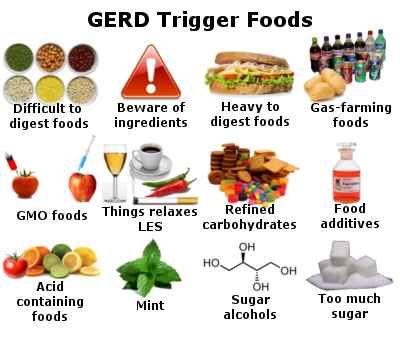 For example, if alarming symptoms appear on the introduction of cottage cheese, then it is immediately canceled. You can use an intestinal sorbent approved by the doctor and an antihistamine to relieve the manifestations of allergies. But with any allergic reaction, it is better to immediately contact a pediatrician.
For example, if alarming symptoms appear on the introduction of cottage cheese, then it is immediately canceled. You can use an intestinal sorbent approved by the doctor and an antihistamine to relieve the manifestations of allergies. But with any allergic reaction, it is better to immediately contact a pediatrician.
— What changes in the digestion of a small child after the introduction of fermented milk products can be considered normal?
— It should be expected that the child's condition will not change with the start of the use of fermented milk food. The appearance of loose stools or constipation means that the products are introduced incorrectly and do not suit him, or there are problems with the gastrointestinal tract.
A change in the nature of the stool may be a manifestation of allergies, intestinal dysbacteriosis, enzyme deficiency, lactase deficiency. To avoid adverse reactions during the period of adaptation to a new product, it must be introduced slowly, increasing the dose every day. So the gastrointestinal tract will get used to the new food, the enzymes will begin to be better produced, the microflora will react calmly and change slowly. If the product does not fit, you can postpone its introduction and return to it after a few weeks.
So the gastrointestinal tract will get used to the new food, the enzymes will begin to be better produced, the microflora will react calmly and change slowly. If the product does not fit, you can postpone its introduction and return to it after a few weeks.
— What advice can you give to parents if a child refuses sour milk? How to replace dairy products for a child?
- First of all, the baby is introduced to one-component complementary foods, that is, they give him only kefir or only cottage cheese without additives. If the child does not eat them, then you can combine cottage cheese with fruit or vegetable purees. But you don't need to mix them with meat, since iron and calcium are conflicting elements enough that they can interfere with nutrient absorption.
It is impossible to force-feed a child, this will form an even greater negative attitude towards complementary foods. It is better to postpone the introduction of a product that he did not like until a later date, try new recipes: dilute cottage cheese with vegetables instead of fruits, cook a casserole with cottage cheese and vegetables.
Children's curds MAMAKO ® in jars contain only children's adapted goat's milk curds and fruit puree from apple, peach, banana, pear. Such a fermented milk product is usually loved by children who did not like pure cottage cheese.
— Is the problem only in the taste preferences of the child?
— If a child does not like something from the food, it is most often associated with improper organization of complementary foods. For example, parents offered the product once, the child refused - and the attempts stopped there. But the baby's taste buds must get used to the new taste and texture, so unfamiliar food can be offered to him for several days or several times a day, and then, if the product is still not liked, postpone its introduction.
It also happens that parents themselves have a negative attitude towards the product - they tried it, wrinkled, expressed dissatisfaction. The child immediately reads this, and a protective mechanism is triggered: why would I eat it if my parents don’t eat it. It is important for mom and dad to show the child by personal example that they eat cottage cheese or drink kefir, and preferably conditionally from the same jar, observing the rules of hygiene.
It is important for mom and dad to show the child by personal example that they eat cottage cheese or drink kefir, and preferably conditionally from the same jar, observing the rules of hygiene.
— We are used to the fact that children's fermented milk products are made from cow's milk, forgetting about goat's milk products. What is their difference?
— In my opinion, goat's milk is much more advantageous than cow's milk in terms of composition, production, quality and the child's reaction to it. Goat's milk is closer to mother's milk in some respects. For example, the composition and quality of protein, carbohydrates. Goat's milk protein is much easier to digest than cow's milk protein, which is more likely to cause an allergic reaction. In addition, goat milk contains casein fractions, which give a lighter porous clot. This is closer to the process of digesting breast milk, so goat milk nutrition will be better absorbed by the baby's body.
— What should parents think when they are told that manufacturers exaggerate the benefits of goat's milk in baby food?
- The key concept here is baby food. Up to a year, whole cow and goat milk cannot serve as food for an infant. A healthy baby can be raised on breast milk or BMS. The negative attitude towards goat milk is mainly due to the fact that it was misused. There was a period when goat's milk was promoted as a substitute for cow's milk for food allergies, which is fundamentally wrong. There was also a moment when parents tried to replace breast milk and adapted formulas with non-adapted goat milk. But the formed negative opinion is unjustified.
Up to a year, whole cow and goat milk cannot serve as food for an infant. A healthy baby can be raised on breast milk or BMS. The negative attitude towards goat milk is mainly due to the fact that it was misused. There was a period when goat's milk was promoted as a substitute for cow's milk for food allergies, which is fundamentally wrong. There was also a moment when parents tried to replace breast milk and adapted formulas with non-adapted goat milk. But the formed negative opinion is unjustified.
In fact, when used correctly, both goat milk-based formulas and goat dairy products are much better for the baby in terms of digestibility, ease of digestion and allergenic activity. Therefore, for my part, I recommend trying and using goat milk products for healthy children. They are better absorbed and digested, and also have more pronounced probiotic effects for the intestines due to the peculiarities of the composition of goat milk. But remember, if the baby is allergic to cow's milk, it cannot be replaced with goat's.











